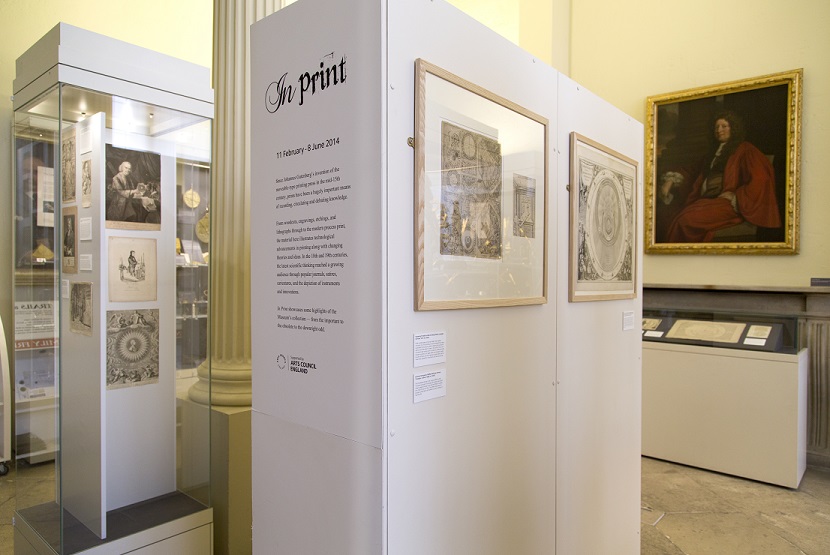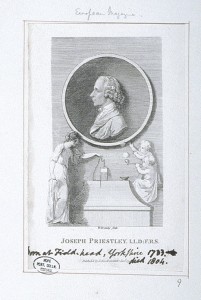The In Print exhibition, currently in the entrance gallery, is a selection of the interesting prints we’ve come across as part of the Making Prints Public project. This exhibition is one of two print related exhibitions in the museum at the moment, with Comets, Meteors and Fireballs in the basement gallery.
If you come to see In Print you may be initially surprised by what appears to be holes in the top of the prints in the tall glass cases at the front of the exhibition. This is the first time that the museum has used a magnet-mounting technique (instead of framing the prints). The holes are actually tiny neodymium magnets which we have used to clamp the prints against custom-made steel paper covered mounts. Magnetic strips were also used to hold on display labels.
The Making Prints Public project has been cataloguing, digitising and tweeting the museum’s print collection over 7 months. Many of the prints were taken from R.T. Gunther’s own personal collection, the Hope Portrait Collection, the Gabb collection and the Radcliffe Observatory collection. There were also items donated by John de Monins Johnson (1882–1956), printer, ephemerist, and classical scholar, and by Lewis Evans (1755–1827), mathematician, astronomer and sundial enthusiast.
A digital version of In Print can be found here. It closes on 11 June 2014.






